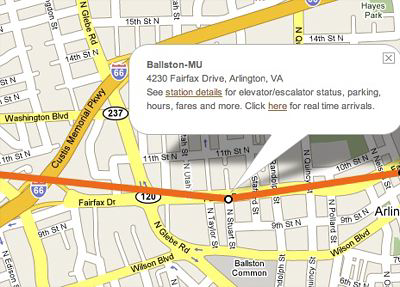No Light Rail in Vancouver!
Junk Science Week: #2 -

I’ve previously discussed the myth that density relieves congestion, yet it persists.
Most recently, planners in Fairfax County, Virginia say they want to put thousands
of high-
Planners claim that Ballston, a rail station on the DC Orange line, proves that this
strategy is successful. The opening of the Ballston station in 1979 led to a lot
of transit-

However, planners fail to mention that a major freeway, I-
The myth that density can reduce congestion goes at least as far back as 1973 with
publication of a book titled Compact City: A Plan for a Livable Urban Environment.
The book called for high-
The year before, Edwin Mills’ models of urban economies had already proven than density
only increased congestion because large increases in density would only produce small
reductions in per-
The modern smart-
USC Professor Genevieve Giuliano pointed out that most of the driving reductions
projected by LUTRAQ came not from density or land-
The Ballston story, and many similar stories, suffer from the problem of self selection.
Even if it is true that people who live near Ballston drive less, it is largely because
people who want to drive less choose to live near transit lines. This does not mean
that putting people who drive a lot in high density transit-
One of the most striking examples of this can be seen in a study by junk scientists
in the Sierra Club, Surface Transportation Policy Project, and other advocacy groups.
The paper (abstracted here) claimed to prove that higher densities, pedestrian-
To reach this conclusion, the junk scientists looked at individual neighborhoods in the San Francisco, Chicago, and Los Angeles urban areas. But they also ranked each of these three urban areas, and San Francisco had the highest density, most intensive transit service, and (by their measures) twice the pedestrian friendliness of the other urban areas.*
Guess which urban area had the most per-
On a neighborhood scale, urban design may correlate with driving, but this is due
to people choosing their neighborhoods according to their transport preferences.
On an urban scale, if there is any correlation at all, it is that more density means
more driving, or at least no less. And even if per-
As long as planners say “less congestion” when they mean “less per-
* According to Census Data, Los Angeles has a higher density than the San Francisco-
14
Trackback • Posted in News commentary, Regional planning, Transportation, Why Planning Fails
Reprinted from The Antiplanner